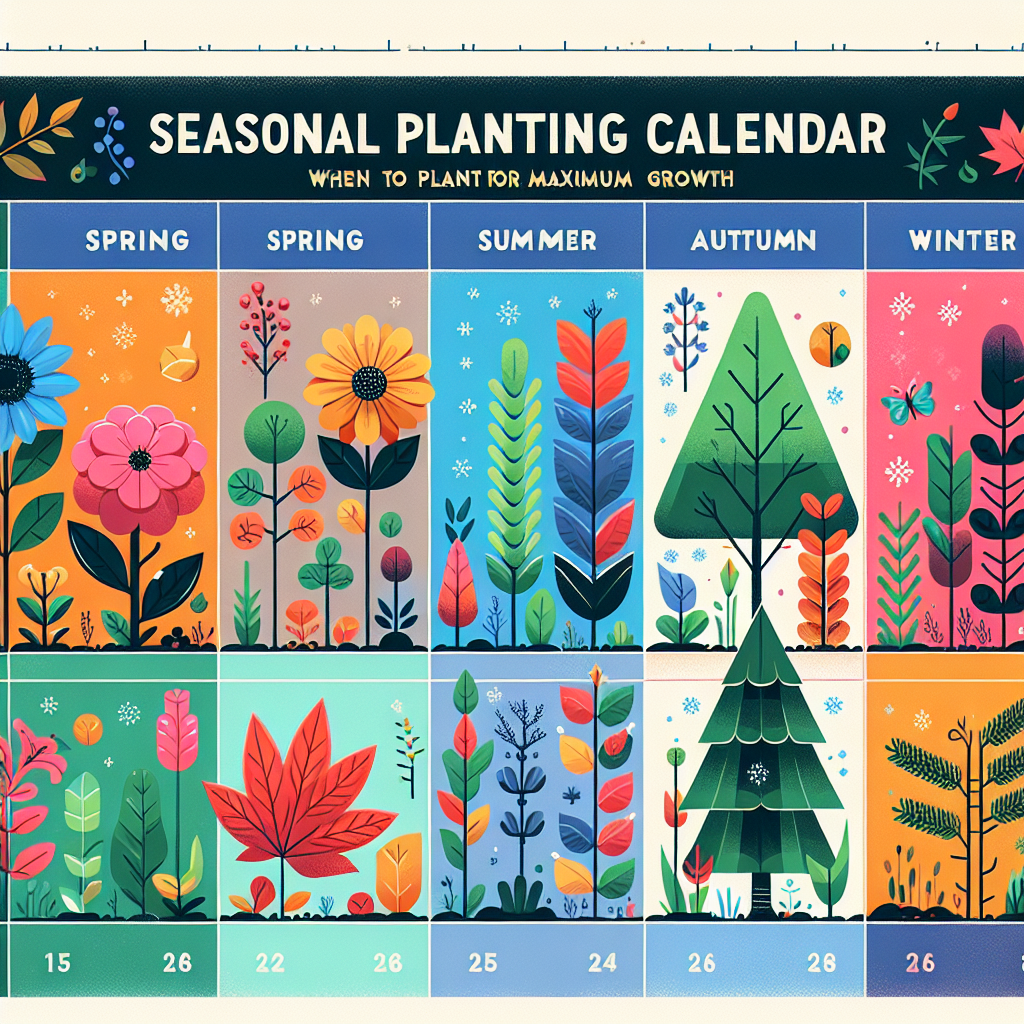Gardening is not just a hobby; it’s a way of life that connects us with nature. Knowing when to plant your crops can make all the difference in the success of your garden. A well-structured seasonal planting calendar can enhance your gardening experience and yield bountiful harvests. In this article, we’ll explore the seasonal planting calendar, how to maximize growth, and some personal tips to help you succeed.
Understanding the Seasons in Gardening
Spring: The Season of Renewal
Spring is a time of rebirth, marked by longer days and warmer weather. As nature wakes up from its winter slumber, it’s the perfect time to start planting.
What to Plant in Spring:
- Cool-Weather Crops: Spinach, peas, and radishes
- Herbs: Parsley, cilantro, and chives
- Annuals: Pansies and snapdragons
Tips for Spring Planting:
Start seeds indoors six to eight weeks before the last frost, especially for warm-weather crops like tomatoes and peppers. This way, your plants will have a head start once the frost has fully passed.
Summer: Growth at Its Peak
As the sun shines brighter and the days grow warmer, summer becomes an essential time for maintaining your garden. During this season, it’s important to focus on care rather than new plantings.
What to Plant in Early Summer:
- Warm-Weather Crops: Tomatoes, zucchini, and bell peppers
- Succession Planting: By seeding quick-growing varieties like beans and cucumbers every few weeks, you ensure a continuous harvest throughout the summer.
Tips for Summer Planting:
Water regularly, as plants can struggle in the heat. Consider mulching to retain moisture and suppress weeds, allowing your plants to thrive.
Fall: Harvest Time and Preparation
As the nights grow cooler, fall signals that it’s time to gather the fruits of your labor while preparing for the winter months ahead.
What to Plant in Fall:
- Cool-Weather Crops: Kale, Brussels sprouts, and carrots
- Cover Crops: Plant clover or rye to enrich the soil and prevent erosion.
Tips for Fall Planting:
As temperatures drop, begin to harvest your warm-season crops. Store what you can, but also enjoy the bounty by cooking seasonal meals that celebrate your hard work.
Winter: Planning and Maintenance
Winter doesn’t have to mean the end of gardening. Instead, it’s a perfect time for planning the next garden season.
What to Focus on in Winter:
- Garden Planning: Use this time to reflect on what worked well in the past year and what didn’t.
- Indoor Gardening: Start herb gardens or small potted plants indoors.
Tips for Winter Gardening:
Consider keeping a gardening journal. Document what you planted, their growth patterns, and any pest issues you encountered. This can be a valuable tool for improving your gardening game in the coming years.
The Importance of Soil and Climate
Soil Testing: The Foundation of Healthy Growth
No matter the season, assessing the quality of your soil is crucial for healthy plant growth. Conduct a soil test to understand pH levels, nutrient content, and soil texture. This knowledge will help you amend your soil and create optimal planting conditions.
Climate Considerations: Know Your Zone
Understanding your USDA Hardiness Zone is critical for successful planting. Zones denote the typical climate conditions in your area, thereby influencing which plants will thrive. Check local gardening resources to know your specific zone and the plants best suited for it.
Tips for a Successful Seasonal Planting Calendar
- Keep It Simple: For beginners, start with easy-to-grow crops. Gradually incorporate more complex plants as you gain experience.
- Rotate Your Crops: To prevent soil degradation and pest issues, practice crop rotation each season.
- Stay Consistent: Stick to your planting schedule and maintain a regular watering and fertilizing routine.
- Embrace Failure: Remember, not all plants will succeed every time. Learn from your experiences and adjust as necessary.
Conclusion: Enjoy the Journey
Gardening is a beautiful blend of science and art. Following a seasonal planting calendar not only optimizes growth but also fosters a deeper relationship between you and your plants. Each season brings new opportunities for growth, learning, and enjoyment.
With careful planning and attention to your garden’s needs, you can enjoy bountiful harvests year-round. So roll up your sleeves, grab your gardening tools, and let nature guide you through the wonders of planting and growing! Happy gardening!


